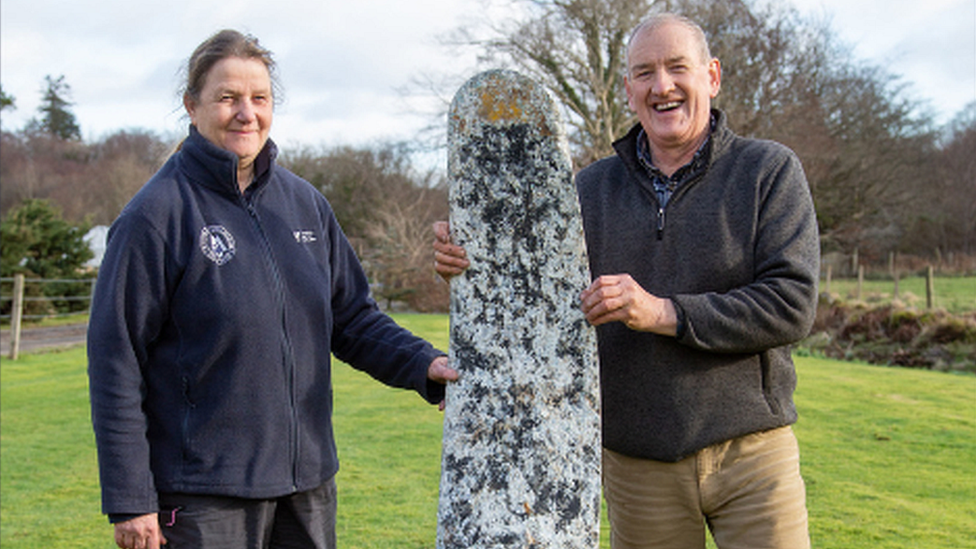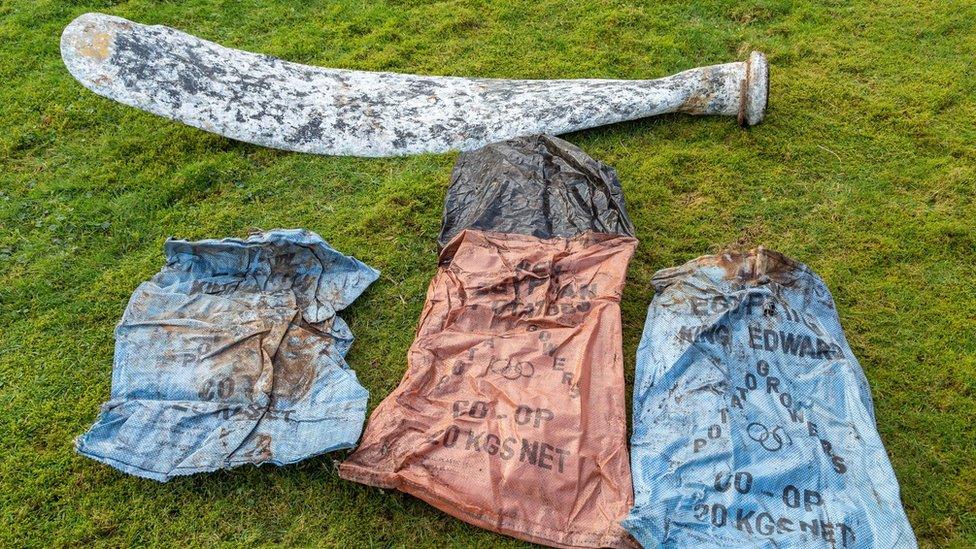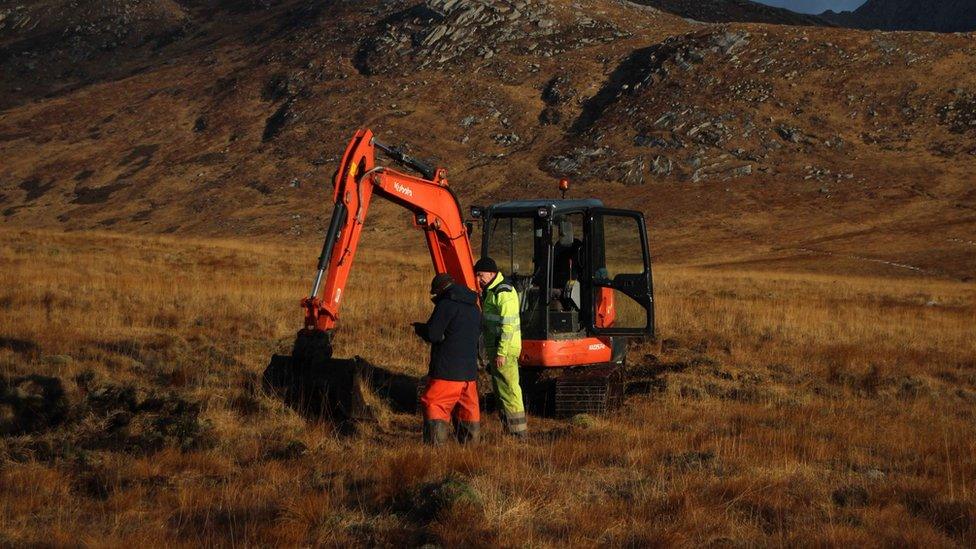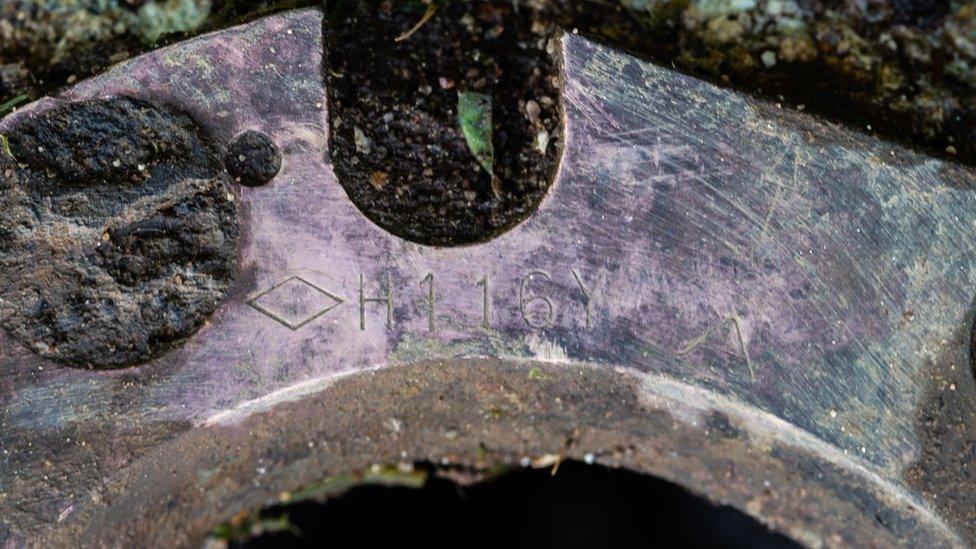WW2 plane propeller find on Arran sparks crash mystery
- Published

Contractor Stewart Lambie discovered the propeller in a peat bog on Arran
A propeller thought to be from a Second World War plane has been found buried in a peat bog on Arran.
The blades, thought to be from a B17 Flying Fortress or a B24 Liberator, were found wrapped in potato sacks during peatland restoration work at Coire a'Bhradain.
Aircraft crashed in the area during the conflict, but the discovery falls outside of two known sites.
Heritage bosses have launched an investigation into the find.

The blade was found wrapped in potato sacks
A contractor who uncovered the propeller was initially worried he had come across human remains.
The National Trust for Scotland (NTS) said there were six WW2 plane crashes on land it now cares for on Arran, which are protected sites.
It is working with relevant organisations and following procedures, such as informing the Military Crash Register, before any further work can be carried out on the latest discovery.
The trust's head of archaeology, Derek Alexander, said the find was "intriguing".

The discovery was made during work to restore peatland
He said: "There are two previously known plane crash sites further up the glen on the steep cliff side of Beinn Nuis, but this object was found outside the mapped spread of debris from both of these, which has caused some uncertainty around which aircraft they belong to.
"The plane part was discovered when our contractor's excavator bucket hit something solid and metallic.
"On closer inspection we found it had been wrapped and tied in a potato sack, which has added further intrigue to the find that lay some distance from the spread of the wreckage of the former crash sites.
"It may have been gathered during the clean-up of the site in the 1940s, immediately after the impact, or through subsequent work by the trust in the 1980s. It's too early to tell but we are determined to get to the bottom of it."
Protected crash sites
The crash site closest to where the propeller blade was found is that of the B24 Liberator, which came down on 24 August 1943 with the loss of all 11 crew and passengers.
The bodies were recovered from the crash site shortly afterwards, but the location is still protected under the 1986 Protection of Military Remains Act.
Mr Alexander said the trust was not permitted to remove the wreckage without permission.

It is hoped serial numbers on the rotor can be used to match it to military records
It is now working with an aviation and aircraft expert to identify the objects and potentially match serial numbers of the parts to historic records held by the military.
The propeller was found in February during peatland restoration work which is helping to mitigate against climate change.
Kate Sampson, senior ranger at the NTS on Arran, said: "I think our contractor got a bit of a shock when he saw the end of the potato sack sticking out of the bog as his first thought was that it could be human remains.
"However, with careful excavation the wrapped propeller was revealed with a rope still tied around it, and we suspect someone might have been dragging the propeller down the hill when it sunk deep into the peat, not to be recovered until now."